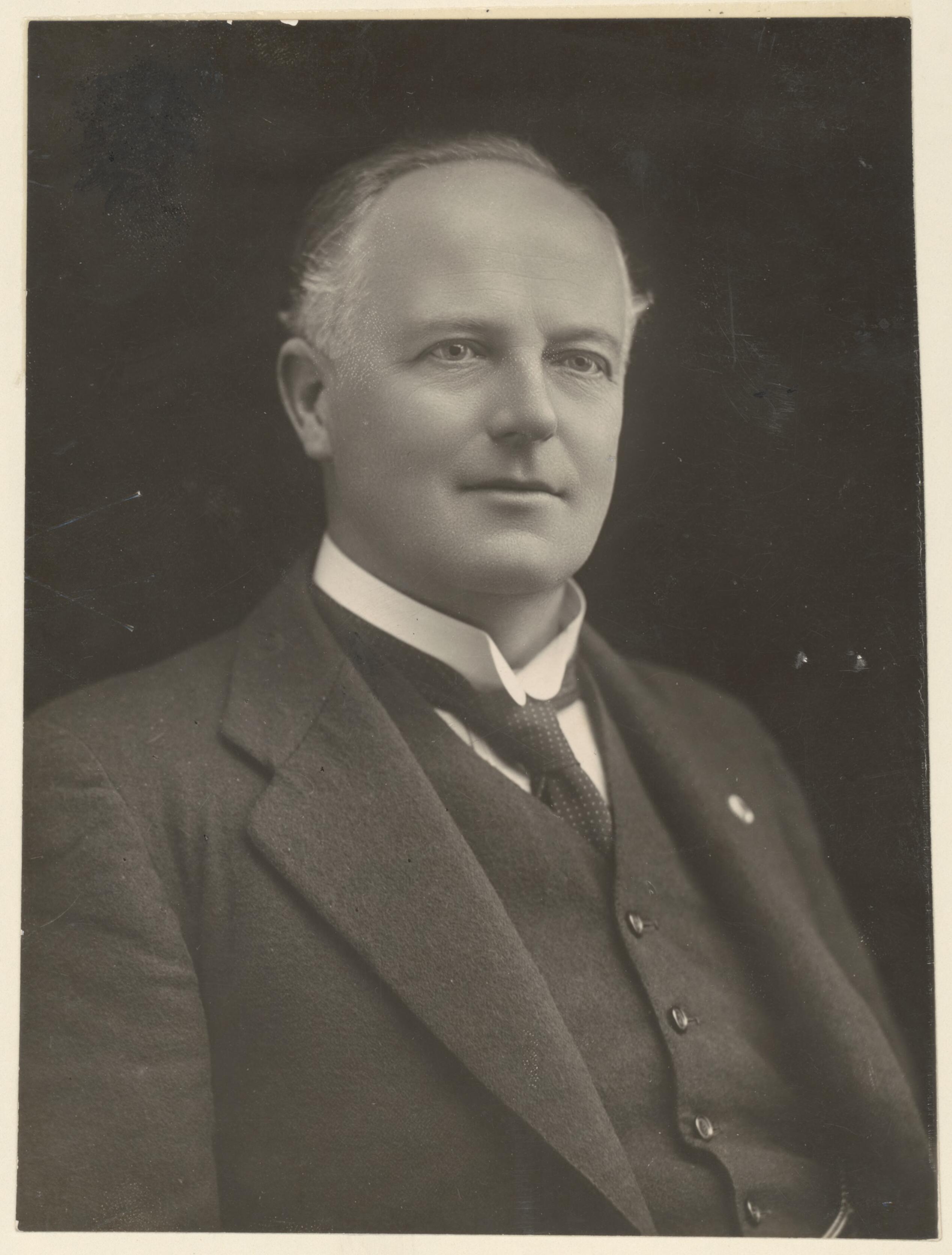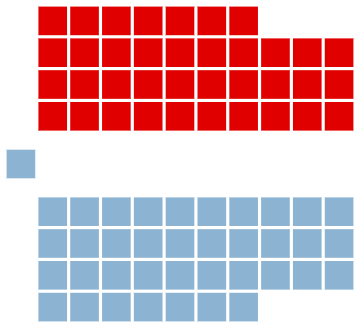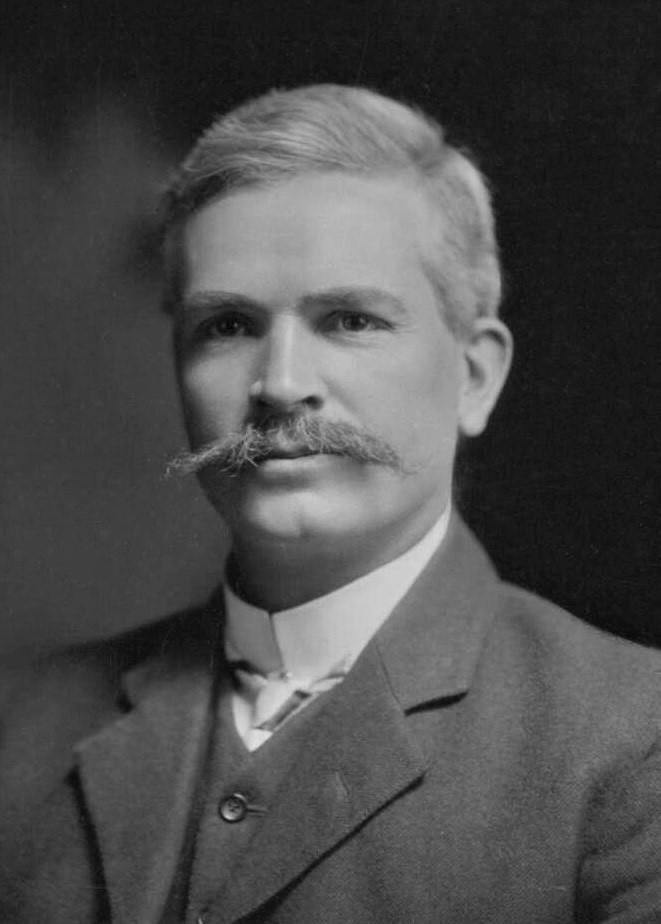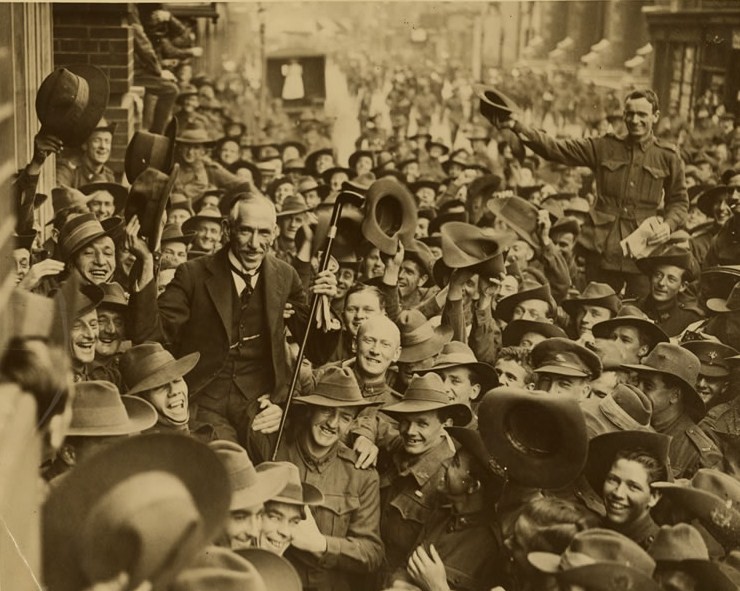|
Division Of Nepean
The Division of Nepean was an Australian Electoral Division in the state of New South Wales. It was located in the western suburbs of Sydney. It originally covered the suburbs of Granville, Lithgow and Penrith. After the redistribution of 27 February 1913 it also included the suburb of Homebush. The Division was named for the Nepean River, which itself was named after British politician Evan Nepean. It was proclaimed at the redistribution of 13 July 1906, and was first contested at the 1906 Federal election. It was abolished at the redistribution of 13 September 1922 and divided between six electorates: Macquarie, Martin, Parramatta, Reid, Robertson and Werriwa The Division of Werriwa is an Australian electoral division in the state of New South Wales. The name Werriwa derives from a local Aboriginal name for Lake George, which was located in the division when it was established in 1900. The division .... Members Election results References {{DEFAULTS ... [...More Info...] [...Related Items...] OR: [Wikipedia] [Google] [Baidu] |
Evan Nepean
Sir Evan Nepean, 1st Baronet, PC FRS (9 July 1752 – 2 October 1822)Sparrow (n.d.) was a British politician and colonial administrator. He was the first of the Nepean Baronets. Family Nepean was born at St. Stephens near Saltash, Cornwall, the second of three sons of Nicholas Nepean, an innkeeper, and his second wife, Margaret Jones. His father was Cornish and his mother was from South Wales. The name "Nepean" is thought to come from the village of Nanpean ("the head of the valley"), in Cornwall. Nepean married Margaret Skinner, the only daughter of Capt. William Skinner, on 6 June 1782 at the Garrison Church at Greenwich. They had eight children, including Sir Molyneux Hyde Nepean, 2nd Bt., and Maj.-Gen. William Nepean, whose daughter Anna Maria Nepean married General Sir William Parke. Their youngest child, Rev. Canon Evan Nepean, became the Canon of Westminster and a Chaplain in Ordinary to Queen Victoria. His son Charles was a Middlesex county cricketer who also pl ... [...More Info...] [...Related Items...] OR: [Wikipedia] [Google] [Baidu] |
Division Of Werriwa
The Division of Werriwa is an Australian electoral division in the state of New South Wales. The name Werriwa derives from a local Aboriginal name for Lake George, which was located in the division when it was established in 1900. The division was one of the original 65 divisions first contested at the first federal election. Werriwa now covers an area in south-west Sydney, including the suburbs of Ashcroft, Austral, Bonnyrigg Heights, Busby, Carnes Hill, Cartwright, Casula, Cecil Hills, Edmondson Park, Glenfield, Green Valley, Heckenberg, Hinchinbrook, Horningsea Park, Hoxton Park, Long Point, Lurnea, Macquarie Fields, Macquarie Links, Middleton Grange, Miller, Minto, Prestons, Sadleir, and West Hoxton; as well as parts of Badgerys Creek, Bonnyrigg, Bringelly, Cecil Park, Denham Court, Ingleburn, Kemps Creek, Leppington, Mount Pritchard, and Rossmore. The current Member for Werriwa, since the 2016 federal election, is Anne Stanley, a member ... [...More Info...] [...Related Items...] OR: [Wikipedia] [Google] [Baidu] |
Billy Hughes
William Morris Hughes (25 September 1862 – 28 October 1952) was an Australian politician who served as the seventh prime minister of Australia, in office from 1915 to 1923. He is best known for leading the country during World War I, but his influence on national politics spanned several decades. Hughes was a member of federal parliament from Federation in 1901 until his death, the only person to have served for more than 50 years. He represented six political parties during his career, leading five, outlasting four, and being expelled from three. Hughes was born in London to Welsh parents. He emigrated to Australia at the age of 22, and became involved in the fledgling Australian labour movement. He was elected to the New South Wales Legislative Assembly in 1894, as a member of the New South Wales Labor Party, and then transferred to the new federal parliament in 1901. Hughes combined his early political career with part-time legal studies, and was called to the bar ... [...More Info...] [...Related Items...] OR: [Wikipedia] [Google] [Baidu] |
Richard Orchard
Richard Beaumont Orchard Order of the British Empire, CBE (14 October 1871 – 24 July 1942) was an Australian businessman and politician. He was a successful watchmaker and jeweller, with premises on George Street, Sydney. He served in the Australian House of Representatives, House of Representatives from 1913 to 1919, representing the Division of Nepean, and was an honorary minister in the Fourth Hughes Ministry. Early life Orchard was born at Cockatoo, near Maryborough, Victoria, to Cornish Australian, Cornish parents John Henry Orchard, a blacksmith, and his wife Alicia, née Thomas. In the 1870s he moved with his family to Sydney. He spent four years as a travelling jewellery salesman in rural New South Wales. In 1895, when he married Maria Annie Austen, he was a photographer living in the Sydney suburb of Ultimo, New South Wales, Ultimo. He later became a watchmaker and established a jewellery store in George Street, Sydney in 1901, which became a public company in 1913 ... [...More Info...] [...Related Items...] OR: [Wikipedia] [Google] [Baidu] |
Electoral District Of Canterbury
Canterbury is an electoral district of the Legislative Assembly in the Australian state of New South Wales, currently represented by Sophie Cotsis of the Labor Party. Canterbury includes the suburbs of Campsie, Canterbury, Clemton Park, Earlwood, Hurlstone Park, Undercliffe and parts of Ashbury, Belfield, Belmore, Beverly Hills, Kingsgrove and Roselands. History Canterbury was created in 1859, replacing part of Cumberland (South Riding), named after and including the then town, now Sydney suburb, of Canterbury. It was bordered on the east by Glebe and Newtown, and from 1880, Balmain and Redfern and stretched in the north to Drummoyne and Rhodes, south to Georges River and west to a line between Salt Pan Creek and Homebush Bay. It was a multi-member electorate, electing two members until 1882 and then four members until the abolition of multi-member electorates in 1894, when it was split into Canterbury, Ashfield, Burwood, Petersham and St George. It was ab ... [...More Info...] [...Related Items...] OR: [Wikipedia] [Google] [Baidu] |
New South Wales Legislative Assembly
The New South Wales Legislative Assembly is the lower of the two houses of the Parliament of New South Wales, an Australian state. The upper house is the New South Wales Legislative Council. Both the Assembly and Council sit at Parliament House in the state capital, Sydney. The Assembly is presided over by the Speaker of the Legislative Assembly. The Assembly has 93 members, elected by single-member constituency, which are commonly known as seats. Voting is by the optional preferential system. Members of the Legislative Assembly have the post-nominals MP after their names. From the creation of the assembly up to about 1990, the post-nominals "MLA" (Member of the Legislative Assembly) were used. The Assembly is often called ''the bearpit'' on the basis of the house's reputation for confrontational style during heated moments and the "savage political theatre and the bloodlust of its professional players" attributed in part to executive dominance. History The Legislati ... [...More Info...] [...Related Items...] OR: [Wikipedia] [Google] [Baidu] |
1913 Australian Federal Election
The 1913 Australian federal election was held in Australia on 31 May 1913. All 75 seats in the House of Representatives, and 18 of the 36 seats in the Senate were up for election. The incumbent Labor Party, led by Prime Minister Andrew Fisher, was defeated by the opposition Commonwealth Liberal Party under Joseph Cook. The new government had a majority of just a single seat, and held a minority of seats in the Senate. It would last only 15 months, suffering defeat at the 1914 election. The 1913 election was held in conjunction with six referendum questions, none of which were carried. According to David Day, Andrew Fisher's biographer, "it was probably the timing of the referenda that was most responsible for the disappointing election result" for the Labor Party. Results House of Representatives ---- ;Notes * Three members were elected unopposed – one Liberal and two Labor. Senate Seats changing hands * Members listed in italics did not contest their seat at ... [...More Info...] [...Related Items...] OR: [Wikipedia] [Google] [Baidu] |
Australian Labor Party
The Australian Labor Party (ALP), also simply known as Labor, is the major centre-left political party in Australia, one of two major parties in Australian politics, along with the centre-right Liberal Party of Australia. The party forms the federal government since being elected in the 2022 election. The ALP is a federal party, with political branches in each state and territory. They are currently in government in Victoria, Queensland, Western Australia, South Australia, the Australian Capital Territory, and the Northern Territory. They are currently in opposition in New South Wales and Tasmania. It is the oldest political party in Australia, being established on 8 May 1901 at Parliament House, Melbourne, the meeting place of the first federal Parliament. The ALP was not founded as a federal party until after the first sitting of the Australian parliament in 1901. It is regarded as descended from labour parties founded in the various Australian colonies by the emergin ... [...More Info...] [...Related Items...] OR: [Wikipedia] [Google] [Baidu] |
Portrait Of George Cann - Swiss Studios (cropped)
A portrait is a painting, photograph, sculpture, or other artistic representation of a person, in which the face and its expressions are predominant. The intent is to display the likeness, personality, and even the mood of the person. For this reason, in photography a portrait is generally not a snapshot, but a composed image of a person in a still position. A portrait often shows a person looking directly at the painter or photographer, in order to most successfully engage the subject with the viewer. History Prehistorical portraiture Plastered human skulls were reconstructed human skulls that were made in the ancient Levant between 9000 and 6000 BC in the Pre-Pottery Neolithic B period. They represent some of the oldest forms of art in the Middle East and demonstrate that the prehistoric population took great care in burying their ancestors below their homes. The skulls denote some of the earliest sculptural examples of portraiture in the history of art. Historical portraitu ... [...More Info...] [...Related Items...] OR: [Wikipedia] [Google] [Baidu] |
1910 Australian Federal Election
The 1910 Australian federal election was held in Australia on 13 April 1910. All 75 seats in the House of Representatives, and 18 of the 36 seats in the Senate were up for election. The incumbent Commonwealth Liberal Party (the result of a merger between the Protectionist Party and the Anti-Socialist Party) led by Prime Minister Alfred Deakin was defeated by the opposition Labour Party, led by Andrew Fisher. The election represented a number of landmarks: it was Australia's first elected federal majority government; Australia's first elected Senate majority; the world's first Labour party majority government at a national level; after the 1904 Chris Watson minority and Fisher's former minority government the world's third Labour party government at a national level; the first time it controlled ''both'' houses of a bicameral legislature; and the first time that a prime minister, in this case Deakin, was defeated at an election. It also remains the only election in Aust ... [...More Info...] [...Related Items...] OR: [Wikipedia] [Google] [Baidu] |
Commonwealth Liberal Party
The Liberal Party was a parliamentary party in Australian federal politics between 1909 and 1917. The party was founded under Alfred Deakin's leadership as a merger of the Protectionist Party and Anti-Socialist Party, an event known as the Fusion. The creation of the party marked the emergence of a two-party system, replacing the unstable multi-party system that arose after Federation in 1901. The first three federal elections produced hung parliaments, with the Protectionists, Free Traders, and Australian Labor Party (ALP) forming a series of minority governments. Free Trade leader George Reid envisioned an anti-socialist alliance of liberals and conservatives, rebranding his party accordingly, and his views were eventually adopted by his Protectionist counterpart Deakin. Objections towards Reid saw Deakin take the lead in coordinating the merger. The Fusion was controversial, with some of his radical supporters regarding it as a betrayal and choosing to sit as independents ... [...More Info...] [...Related Items...] OR: [Wikipedia] [Google] [Baidu] |
1919 Australian Federal Election
The 1919 Australian federal election was held on 13 December 1919 to elect members to the Parliament of Australia. All 75 seats in the House of Representatives and 19 of the 36 seats in the Senate were up for election. The incumbent Nationalist Party government won re-election, with Prime Minister Billy Hughes continuing in office. The 1919 election was the first held since the passage of the ''Commonwealth Electoral Act 1918'', which introduced preferential voting for both houses of parliament – instant-runoff voting for the House of Representatives and preferential block voting for the Senate. It was held several months earlier than constitutionally required, so that the government could capitalise on the popularity of Hughes after his return from the Paris Peace Conference. The Nationalists campaigned on the government's war record and appealed to return soldiers. The Australian Labor Party (ALP), in opposition since the 1916 party split, contested a second election under ... [...More Info...] [...Related Items...] OR: [Wikipedia] [Google] [Baidu] |








